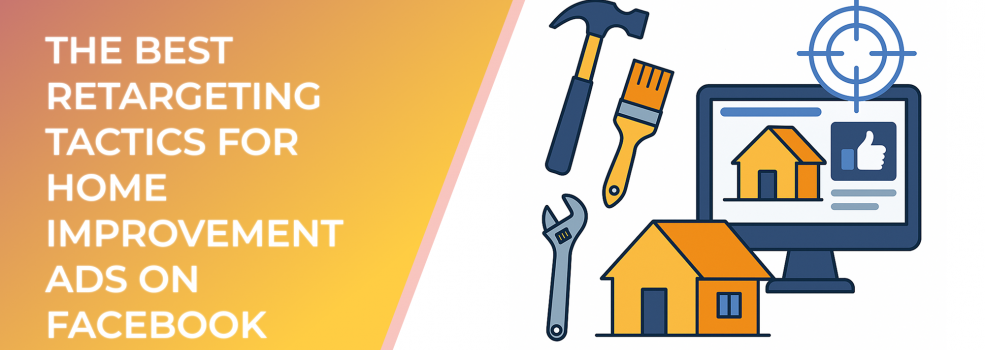Retargeting allows you to reconnect with homeowners who have shown interest but didn’t take action. Since home improvement decisions are rarely made instantly, staying visible throughout the buyer journey is crucial. According to AdRoll, retargeted users are 70% more likely to convert compared to cold prospects. For home improvement services, where purchase cycles can span weeks or months, retargeting ads keep your business top-of-mind until the customer is ready.
Tactic 1: Segment by Engagement Type
Retargeting ads outperform standard display: 76% higher clicks, and dynamic creatives drive 30% more conversions
Not all prospects interact with your ads the same way. Some click but don’t book, while others only watch a video. Use Facebook’s Custom Audiences to segment based on behaviors:
-
Website visitors: Target those who explored your service pages but didn’t request a quote.
-
Video viewers: Retarget people who watched at least 50% of your explainer or project showcase videos.
-
Engaged users: Re-engage prospects who liked, shared, or commented on previous ads.
This segmentation allows for more personalized ad messaging, which improves CTR (click-through rate) and reduces wasted impressions.
Tactic 2: Use Dynamic Retargeting for Products and Services
How dynamic retargeting works: personalized service ads based on user behavior
Dynamic ads automatically show prospects the exact service or product they viewed. For example, if a user browses “kitchen remodeling” on your site, the retargeting ad should showcase that same service instead of a generic home improvement pitch. Facebook’s dynamic ad feature helps increase relevance, boosting conversion rates by up to 34% according to industry reports.
Tactic 3: Layer Retargeting with Lookalike Audiences
After building a strong retargeting pool, expand reach by creating Lookalike Audiences. For home improvement, you can generate lookalikes based on:
-
People who requested quotes.
-
Customers who completed projects.
-
High-value website visitors (e.g., those who viewed pricing pages).
This method combines retargeting precision with the scalability of prospecting, leading to higher ROAS (return on ad spend).
Tactic 4: Retarget by Funnel Stage
A homeowner researching “roof repair” has different intent than someone who added your service to their booking form but didn’t confirm. Build retargeting campaigns for each funnel stage:
-
Awareness: Share customer testimonials and before/after visuals.
-
Consideration: Offer free consultations or discounts.
-
Decision: Add urgency with limited-time promotions.
Aligning creatives with funnel stages ensures your ads speak to where the customer is in their buying journey.
Tactic 5: Optimize Frequency and Budget
While retargeting increases conversions, showing too many ads can cause ad fatigue. Facebook recommends a frequency cap of 1–2 impressions per day. Monitor CTR, conversion rates, and CPA (cost per acquisition) to optimize budgets. Businesses using frequency management have reported up to 20% lower CPA in retargeting campaigns.
Conclusion
Retargeting is one of the most powerful tools for home improvement businesses running Facebook ads. By segmenting audiences, using dynamic retargeting, and aligning campaigns with funnel stages, you can improve performance, maximize budget efficiency, and boost conversions.
Suggested Reading
For more strategies on Facebook ad optimization and lead generation, check out these articles on LeadEnforce:

